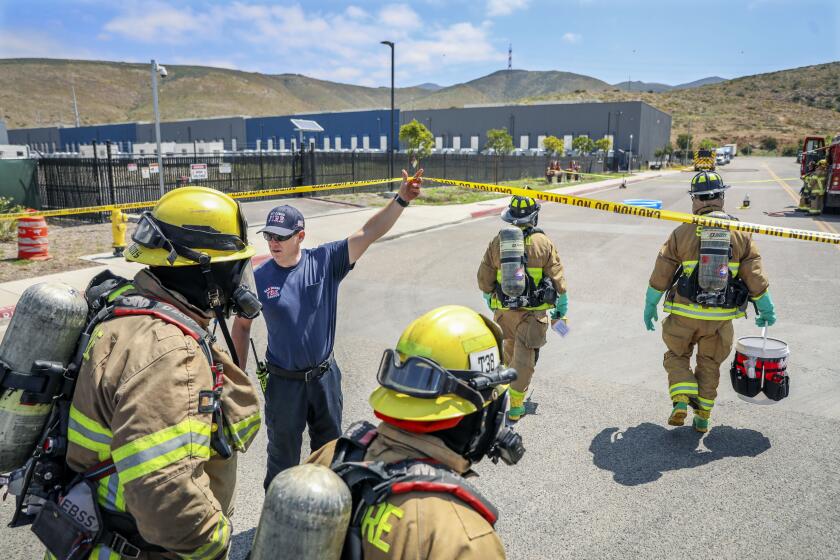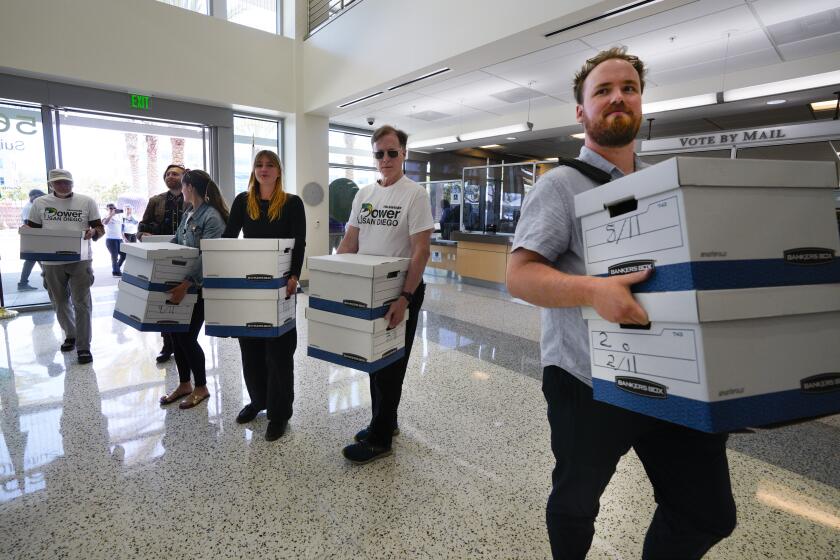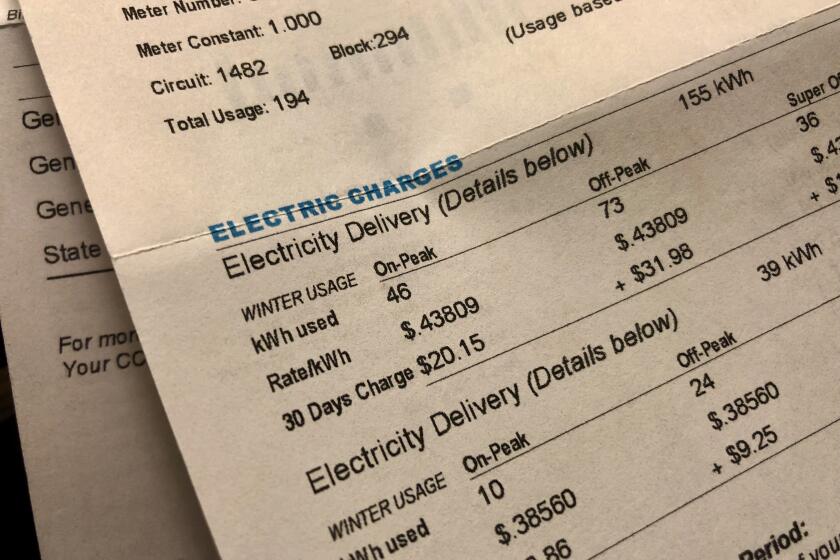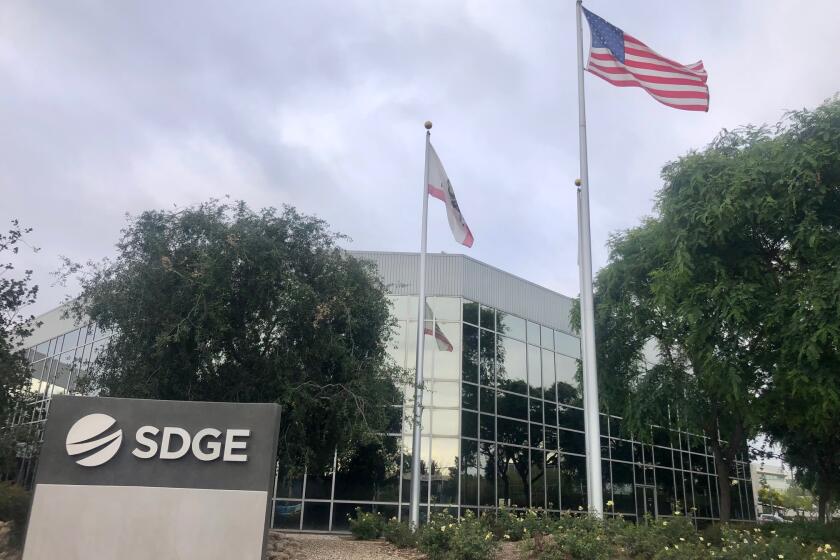Biden hits the pause button on new LNG projects. It may cloud expansion plans at a Sempra project in Texas
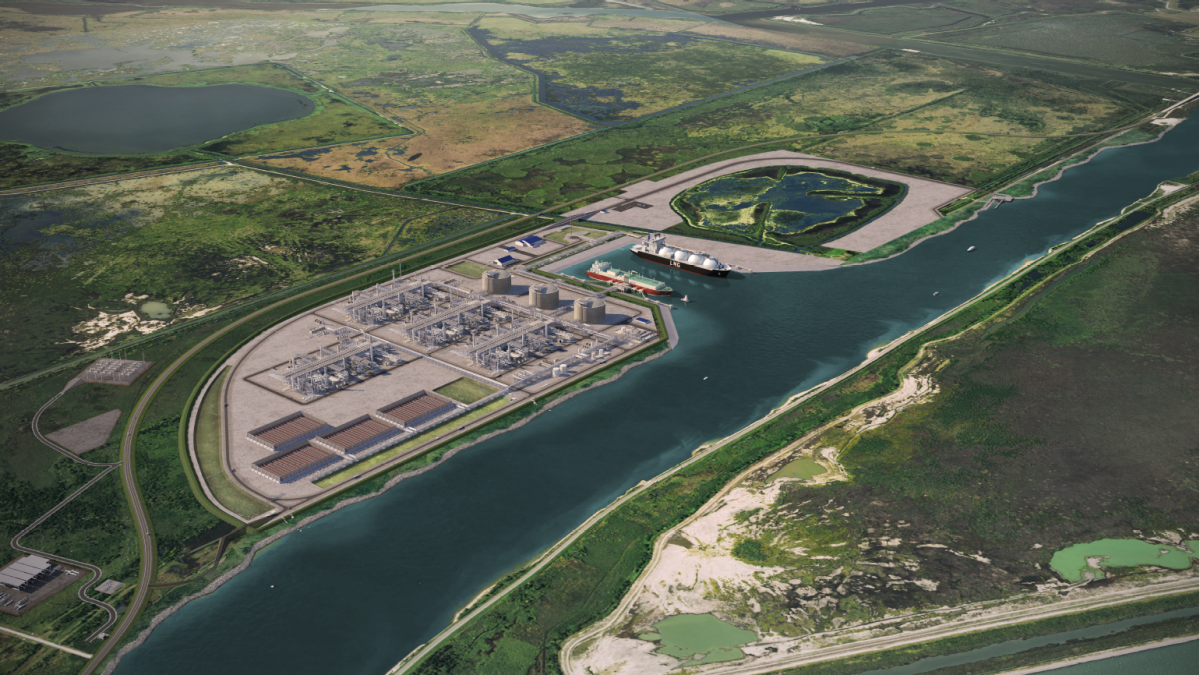
The Department of Energy will review climate and economic impacts of new U.S. projects that export natural gas
A $13 billion liquefied natural gas export facility that a subsidiary of San Diego-based energy giant Sempra is building on the Gulf Coast of Texas is scheduled to begin operations in 2027.
But plans to eventually expand the project are up in the air after the Biden administration last month placed an indefinite pause on approving new LNG projects to review their impacts on the climate.
“We just have to wait through this process of the pause,” Sempra CEO Jeff Martin told analysts during the company’s quarterly earnings call Tuesday.
The Port Arthur LNG facility is already under construction and intends to have the capacity to ship about 13 million metric tons of natural gas per year to destinations around the world.
The project has obtained all the required permits to commence operations for its first phase and will not be affected by the pause, but expansion plans in the second phase would roughly double Port Arthur’s export capacity, and the project still needs to receive a federal export permit.
“We are optimistic that normal permitting conditions will resume after all relevant variables have been carefully evaluated by the administration,” said Justin Bird, CEO of Sempra Infrastructure, the subsidiary based in Houston that oversees the company’s LNG projects.
The Biden administration’s announcement came ahead of a planned sit-in at the U.S. Department of Energy by prominent environmental activists who oppose a Virginia company’s plans to build a project dubbed CP2 on the Louisiana Gulf Coast that would ship about 20 million metric tons of LNG to international markets.
Described by the White House as a “temporary pause,” the decision instructs the U.S. Department of Energy to review new LNG projects. There’s no indication how long the delay will last, but the Energy Department’s deputy secretary said during a Senate hearing it will be a matter of “months, not years.”
While the pause is in effect, President Joe Biden said in a statement, “we will take a hard look at the impacts of LNG exports on energy costs, America’s energy security, and our environment.”
Environmental groups that say LNG projects extend the world’s use of fossil fuels cheered the decision.
“It’s undeniable that LNG export projects are simply not in the public interest and we are confident that if this review is done right, that would end the rubber-stamping of these projects,” said Sierra Club executive director Ben Jealous.
Biden’s critics say the move was made to appease environmentalists during an election year.
U.S. allies “rely on LNG exports for their energy needs,” 23 attorneys general from Republican-led states said in a letter to Biden and Energy Secretary Jennifer Granholm. “And meeting this demand requires new export terminals leading to billions of dollars in capital expenditures and tens of thousands of new jobs.”
The pause does not affect fully permitted projects, including Sempra Infrastructure’s existing $10.5 billion Cameron LNG facility, which opened in August 2020 near the town of Hackberry, La.
Home to three production units — called “trains” in the parlance of the industry — Cameron has plans to add a fourth train that would give the facility the capacity to ship as much as 21.7 metric tons per year.
“We remain as enthusiastic as ever about the merits of our LNG projects,” Bird said.
Train 1 at Port Arthur is scheduled to start up in 2027, with train 2 set for 2028.
In addition to Port Arthur and Cameron, Sempra Infrastructure is adding an export component to an already existing LNG terminal near Ensenada, Mexico, called Energía Costa Azul. The $2 billion project is expected to be completed by the summer of 2025.

Energía Costa Azul is considered attractive because ships carrying LNG cargoes to markets in Asia can skip paying the tolls at the Panama Canal that facilities on the Gulf Coast must pay and can reach their destinations in about half the time.
The LNG business has boomed in the past decade after natural gas production in the U.S. reached all-time highs, largely due to horizontal drilling techniques and hydraulic fracturing, known as “fracking.”
There are seven LNG facilities operating in the U.S., according to the Energy Information Administration, and at least five more under construction.
In the LNG process, export facilities take natural gas via pipelines and cool it to minus 260 degrees Fahrenheit. The liquefied gas is then put onto specially made cargo tanks on double-hulled ships that sail to international destinations — in particular to markets keen on replacing coal with natural gas.
LNG has taken a higher profile because of Russia’s war in Ukraine. Gazprom, Russia’s state-owned natural gas company, supplied about 40 percent of the gas that heated European homes and powered businesses prior to the invasion. Since then, European Union countries have scrambled to make deals with LNG exporters in other countries.
Get U-T Business in your inbox on Mondays
Get ready for your week with the week’s top business stories from San Diego and California, in your inbox Monday mornings.
You may occasionally receive promotional content from the San Diego Union-Tribune.


